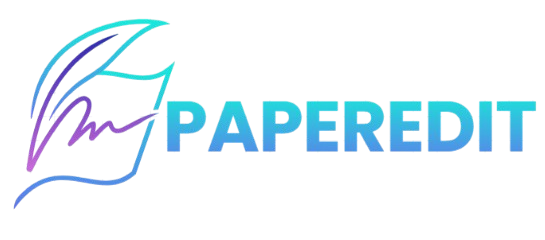Scopus Indexing: How to Check If a Journal is Indexed and Why It Matters
Scopus indexing is a critical factor when choosing where to publish your research. In today’s fast-paced academic world, where research credibility and scholarly recognition are paramount, publishing in a reputable academic journal can significantly impact an academic career. Among the many journal databases, Scopus indexing stands out as a mark of quality. It ensures that your research receives the visibility and academic validation it deserves, while protecting you from predatory or fake journals. This guide explores the importance of Scopus indexing, how to find Scopus indexed journals, compare Scopus vs Web of Science, and spot fake journals
Why Scopus Indexing Matters
Scopus, managed by Elsevier, indexes over 25,000 active titles across disciplines. A journal with Scopus indexing meets rigorous criteria regarding quality, peer-review processes, citation impact, and ethical publishing practices. Publishing in a Scopus indexed journal can:
- Enhance visibility and citation rates for your work.
- Strengthen your academic CV, especially for grants, promotions, or PhD admissions.
- Ensure global exposure to your research across academic, industrial, and policy-making communities.
- Signal scholarly merit and reliability to your peers.
In contrast, non-indexed journals often lack transparency, peer review, and credibility—affecting the value of your publication.
How to Check Scopus Indexing for a Journal
1. Use the Official Scopus Sources Tool
- Visit the Scopus Sources website.
- Enter the journal name, ISSN, or publisher in the search bar.
- If listed, check the coverage years to confirm it's currently indexed.
- Review metrics like CiteScore, SJR, and SNIP to assess impact.
2. Use a Scopus Journal Checker (With Caution)
Some third-party tools claim to verify Scopus indexing. Use them cautiously and always verify through the official Scopus website to avoid misleading results.
3. Examine the Journal’s Website
- Look for Scopus indexing claims.
- Be cautious—predatory journals often lie about their indexing status.
- Always cross-reference with Scopus to confirm authenticity.
Table: Key Differences Between Scopus Indexed and Non-Indexed Journals
| Feature | Scopus Indexed Journals | Non-Indexed Journals |
|---|---|---|
| Peer Review Process | Rigorous and standardized | Often lacks transparency |
| International Recognition | High | Limited |
| Citation Tracking | Enabled with Scopus metrics | Unavailable or unreliable |
| Inclusion Criteria | Strict editorial and ethical standards | Minimal or absent |
| Academic Value | Highly regarded | Often disregarded |
Scopus vs Web of Science: Which One Should You Choose?
Both Scopus and Web of Science (WoS) are trusted journal indexing databases, but each has unique strengths:
- Coverage: Scopus covers more journals across disciplines, including arts and humanities. WoS is more selective and strong in natural sciences.
- Citation Metrics: Scopus provides CiteScore, SNIP, and SJR, while WoS uses the Impact Factor (IF).
- User Experience: Scopus offers more intuitive search and filtering tools.
Your choice should depend on your field, institutional preferences, and journal reputation.
How Scopus Indexing Helps You Avoid Predatory Journals
The rise of open-access publishing has led to a surge in fake or predatory journals. These often:
- List fake editorial boards.
- Lack a clear peer-review process.
- Have poorly designed websites and unprofessional language.
- Demand hidden or excessive fees upfront.
Scopus indexing acts as a quality filter—if a journal claims Scopus indexing but isn't listed, it’s a red flag.
Practical Guide: How to Find Scopus Indexed Journals for Your Manuscript
1. Use the Scopus Journal Finder
Elsevier’s Journal Finder Tool allows you to input your manuscript title and abstract to receive tailored journal suggestions.
2. Search by Subject Area
Use the Scopus Sources tool to filter journals by subject, helping you target field-specific indexed journals.
3. Check University Recommendations
Many universities maintain curated lists of Scopus indexed journals by discipline.
4. Use the Latest Scopus Indexed Journal List (2025)
Ensure your journal is currently indexed. Scopus updates its list regularly—refer to the 2025 version to avoid submitting to delisted journals.
Why Use Professional Help for Scopus Indexed Journals?
Publishing in Scopus indexed journals requires more than just good research. Manuscripts must be properly formatted, structured, and aligned with journal scope.
At paperedit.com, we offer:
- Scopus-standard manuscript editing
- Target journal selection based on your research
- Formatting and citation alignment
- Support in avoiding predatory publishers
Let our team guide you through the complexities of ethical academic publishing to improve your chances of acceptance.
Conclusion: Scopus Indexing Is the Gatekeeper of Academic Quality
Knowing how to check Scopus indexing is essential for academic credibility, career growth, and research impact. As the academic world faces increasing threats from predatory publishers, Scopus indexing remains a trusted benchmark of journal quality.
By using tools like the Scopus Source list, Journal Finder, and professional editing services like paperedit.com, you can ensure your work is not just published—but cited, trusted, and globally respected.
For further assistance, feel free to contact us via email at editing@paperedit.com or through WhatsApp at +447458935352. You can also fill out the contact form for additional inquiries.

